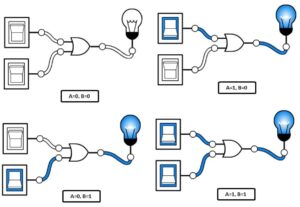A physical design engineer is a professional in the field of integrated circuit (IC) design who specializes in the physical implementation of digital or analog chips. Their primary role is to take a logical design (RTL – Register Transfer Level) created by logic design engineers and convert it into a physical layout that can be fabricated as an actual semiconductor chip.
Morning
The sun rises over the bustling city of Bangalore, and Rajesh, a physical design engineer working at a leading semiconductor company, starts his day with a cup of hot chai. As he settles into his office, he receives an urgent call from his team lead. The call goes like this:
Team Lead: “Rajesh, we’ve got a critical timing violation in the latest chip design. The client is getting anxious, and we need to fix this as soon as possible. Can you take charge and resolve it by the end of the day?”
Rajesh feels a rush of responsibility and understands the significance of the task. He opens his laptop to examine the design and timing reports to pinpoint the exact violation that is affecting the chip’s performance. The challenge ahead seems daunting, but he is determined to overcome it.
Read more: A Day in the Life of a Yield Enhancement Engineer
Afternoon
As Rajesh delves deeper into the problem, he starts formulating a plan of action. He identifies the critical paths in the design and carefully analyzes each component responsible for the timing violation. He also reviews the design requirements and constraints provided by the client.
Knowing that time is of the essence, Rajesh collaborates with the logic design team and cross-functional teams to understand the intricacies of the design. Together, they brainstorm and discuss potential solutions to optimize the critical paths while keeping the power and area constraints in mind.
Rajesh decides to leverage advanced synthesis and optimization techniques that are specific to the Indian market. He configures the tools and starts running the synthesis process. As the clock ticks away, he constantly monitors the progress and looks for any issues that might arise during optimization.
Despite facing a few challenges along the way, Rajesh’s perseverance and experience come to the fore. He identifies certain design optimizations and tweaks that can be made manually to further improve the chip’s performance.
Evening
As the sun sets and the evening sets in, Rajesh finally sees some positive results. The synthesis tool has managed to significantly reduce the critical path delays, bringing the design closer to meeting the timing targets.
With time running out, Rajesh takes a pragmatic approach and fine-tunes the design to eliminate any remaining timing violations. He collaborates with the verification team to ensure that the changes made do not introduce new issues in the design.
As the clock strikes the end of the day, Rajesh takes a deep breath of relief. The design now passes all critical timing checks, and he feels a sense of accomplishment. He documents all the changes made and prepares a detailed report to share with his team lead and the client.
He sends an email to his team lead, updating him about the successful resolution:
Subject: Timing Violation Resolved – Design Back on Track!
Dear Team Lead,
I’m happy to inform you that we’ve successfully resolved the critical timing violation in the chip design. It was a challenging day, but with the collaborative efforts of the team, we managed to meet the performance targets. The revised design is now ready for verification.
Thanks for entrusting me with this critical task, and I’m confident that the client will be pleased with the outcome.
Warm regards,
Rajesh
As Rajesh logs off and prepares to head home, he feels proud of his team’s abilities and the spirit of teamwork that is so ingrained in the Indian work culture. He knows that in the dynamic world of chip design, each day presents new opportunities to learn and grow, and he looks forward to the next challenge with enthusiasm and optimism.








